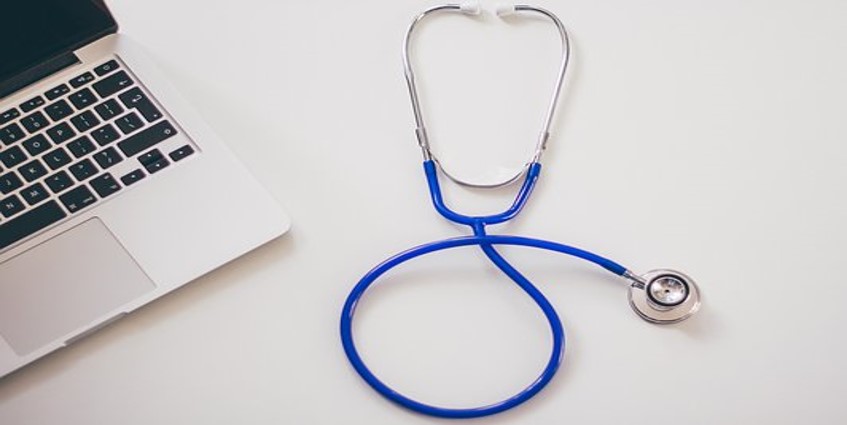
@ShahidNShah


Healthcare technology is evolving rapidly and transforming the way hospitals and clinics deliver healthcare and manage information. A variety of healthcare solutions are available that can help hospitals to have a seamless digital transformation. Many other innovative solutions play a key role in offering convenience to the healthcare staff as well as patients.
One such innovative solution is a healthcare information system that helps healthcare professionals streamline operations and optimize resources. It also helps healthcare facilities to deliver improved patient care. To run modern healthcare facilities, software solutions play a pivotal role. And when we take a look at the future, we can see various trends rising in the realm of healthcare technology.
This blog explores important trends that are going to shape the future of the healthcare industry and its technological solutions.
In recent years, AI has made considerable progress and is creating waves across many industries. Artificial intelligence technology is very helpful when it comes to data processing and making decisions.
Machine learning technologies are largely used in the creation of new pharmaceutical technologies for the enhancement of the diagnosis processes. For example, in the time of COVID-19, AI helped doctors analyze the CT scans of patients to detect pneumonia.
In radiotherapy, 3D contouring of a patient used to take hours but with the help of AI-enabled Project InnerEye by Microsoft, the process could be completed within a few minutes. It is an open-source project on GitHub along with another AI system from Microsoft named Project Hanover which helps catalog biomedical research papers from PubMed. It reduces the time for cancer diagnosis as well as helps prescribe the right drugs for every patient.
When you combine AI with chatbot technology, you can create virtual assistants for your digital platforms. It improves the efficiency of telehealth. They can’t provide primary diagnosis like doctors but they can assist the patient through the entire process. They are also tasked with gathering necessary information from patients before their treatments are initiated.
Training data is the most critical factor for any AI-based technological solution to be successful. An AI or ML-powered system performs according to the data it was trained on.
The larger the volume and higher the quality of your training data, the better your AI systems are bound to perform. To ensure the best outcomes, you have to employ the best data scientists and software developers to work with AI solutions.
The telehealth market is expected to grow to $185.6 billion by 2026 – GlobeNewswire. But before we explore the opportunity that lies in the future, it is important to understand that the major issue with telehealth is HIPAA compliance.
Although the COVID pandemic has boosted the use of telehealth care, healthcare professionals should pause for a moment to consider whether these telehealth apps are reliable enough to communicate with patients. Are they secure and certified to manage private healthcare information?
In such cases, you need a solution that can effectively fulfill all your legal privacy requirements. Let us consider an open-source API-based system called WebRTC. It is a telemedicine app that connects mobile apps and web browsers for an efficient transmission of data, audio, and video. It is one of the most useful teleconferencing features.
Data storage is another factor to take into consideration. Many telemedicine solutions use cloud storage to save information. It is necessary to check whether these cloud storage services comply with government regulations for the protection of health-related information.
Opting for HIPAA-compliant cloud storage solutions would help healthcare providers maintain the efficiency and functionality of any healthcare operation that would require EVRs. In addition to teleconferencing and data hosting, many more useful features of telemedicine can help hospitals and clinics. It includes wearable integrations, visit history, healthcare provider reviews, secure messaging, appointment management, location services, and security.
Some telemedicine solutions would have to collect fitness-related data from wearable and consumer devices like Apple HealthKit and Google Fit. maintaining these integrations efficiently and securely benefits both healthcare providers as well as patients.
Extended reality is a blanket term that includes all the concepts of virtual reality, augmented reality, and mixed reality. It can improve the healthcare industry from helping telehealth apps to assisting surgery.
Many surgeons are aided in surgery with Microsoft’s Hololens headsets which use mixed reality technology. Both hands of a surgeon are occupied during surgery. These headsets can give heads-up information to them right in their ears during surgery. Such a setup not only helps surgeons improve collaborative team efforts and remote assists but is also useful for training purposes.
The advent of AR headsets makes it possible to create similar applications. To expand the use of such solutions in different types of surgeries in the future, more specialized healthcare softwares is required.
And don’t think that the AR-VR technologies are limited only to operating rooms and headsets. The technology is also helping nurses find veins to draw patient’s blood. Specialized sensors and AI technology play a crucial role in the functioning of augmenting reality.
Wearable devices keep track of the patient’s health for the individuals or their doctors to monitor remotely. Deloitte states that almost 39% of users have a smartwatch. It is a very helpful wearable device that can offer healthcare services even if it is as basic as monitoring your heart rate.
Some wearable devices are capable of monitoring blood oxygen saturation and come with pedometers to check physical health. Some smartwatches are equipped with specialized sensors that can detect low blood oxygen saturation. It can be a life-threatening condition so, getting a heads-up from your smartwatch can be life-saving.
Smartwatches are also getting good at measuring the blood vitals of the users. The variation in the composition and volume of blood is measured by an optical technology called PPG. The technology is miniaturized for use in smartwatches. It offers a lot of information on your blood vitals. Healthcare providers diagnose and advise patients based on that data.
Apart from smartwatches, there are many more wearable devices available in the healthcare industry like smart hearing aids and bio patches. AI is used to improve noise isolation in hearing aids. The users can get relevant data on their blood vitals without using a smartwatch with the help of bio patches.
As per the report from HealthITSecurity.com, more than 550 healthcare organizations have experienced data breaches which impacted over 40 million people. Hence, privacy and security are as important as the quality of care and scope of efficiency in a healthcare software solution.
The first and foremost thing to do to avoid security breaches is to make your organization HIPAA-compliant. If you are treating patients globally, then it is also recommended that you comply with the European Union’s General Data Protection Regulation.
Many healthcare providers use softwares like Skype and Facetime to communicate with their patients. But they aren’t aware that these softwares aren’t fully compliant with government regulations. Although the OCR from the HHS department has relaxed the enforcement of their policies during the public health emergency, it is advisable to not rely on that discretion.
A wide range of video conferencing softwares is available in the market that is compliant with these regulations. But what if your existing data infrastructure experiences difficulties in integrating with the available options? What if the need arises and the healthcare provider has to exchange ePHI with the patient using third-party software? In that case, they have to get the business associate exception from the vendor. It can be very difficult and tedious.
Still, there are no guarantees that a third-party program will completely protect your patient’s data. Securing the patient data is critical especially if you are a remote doctor. ePHI data is transmitted in structured formats which can complicate the process even further.
That is why you need to have a custom healthcare software solution that is both compliant with regulations and easy to use.
To offer better patient care and improve efficiency, healthcare organizations must embrace these trends and technologies especially when we are living in an increasingly interconnected digital world. With the evolution of technology, it becomes important for healthcare providers to leverage healthcare information systems and other software solutions to cater the best treatment and care to patients.

We have a conversation with Claudia Finkelstein, an internal medicine physician, as she reimagines the concept of physician burnout. Join us as Claudia introduces her alternative model for addressing …
Posted Jan 8, 2024 Physician Burnout Scheduling - Physician
Connecting innovation decision makers to authoritative information, institutions, people and insights.
Medigy accurately delivers healthcare and technology information, news and insight from around the world.
Medigy surfaces the world's best crowdsourced health tech offerings with social interactions and peer reviews.
© 2025 Netspective Foundation, Inc. All Rights Reserved.
Built on Jun 30, 2025 at 6:08am